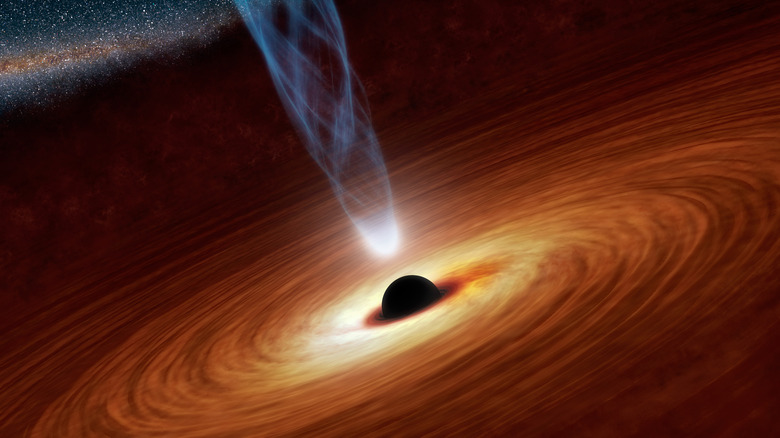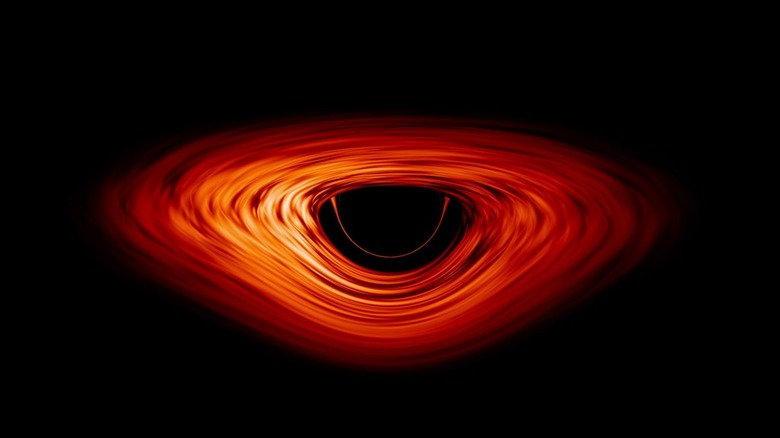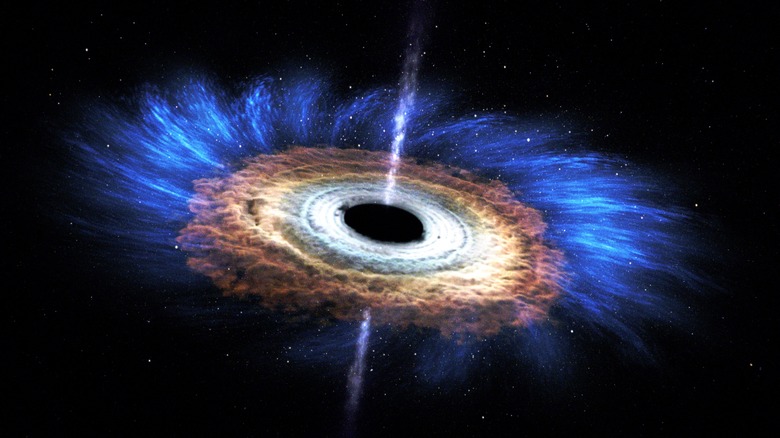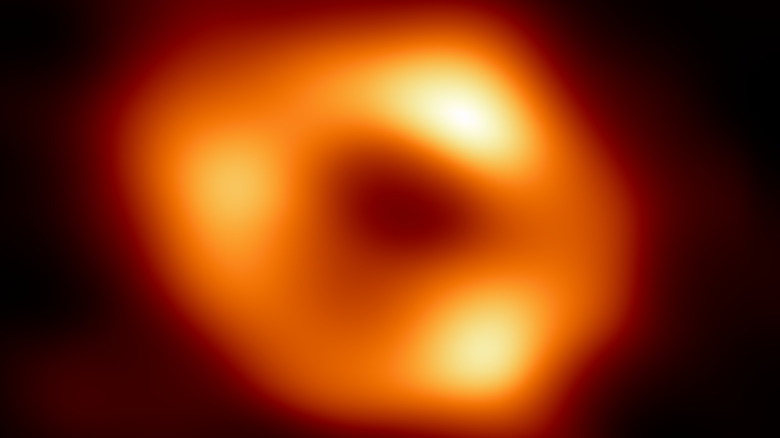Here's What Happens When A Dormant Black Hole Becomes Active Again
Black holes, especially the supermassive type, have developed a reputation as some sort of forever-famished cosmic devourers. Of course, when you have gravity so strong that even light can't escape the pull and the burps also extend across light years in space, a fearsome image is fitting.
But black holes aren't always on a feeding spree, tearing apart cosmic clouds and anything else that comes close. A black hole can also be in a state scientists classify as dormant. Quiescent is the more scientifically accurate term to describe this state. Black holes are known to go on such a slumber from time to time.
This nap can last anywhere from a few years or decades all the way up to millions of years. Going into such a state doesn't mean a black hole has suddenly lost its appetite. Scientists believe that when all the matter within a devouring range has been sucked up, the black hole becomes quiescent. Once a black hole reaches a quiescent state, it stays that way until it's triggered to begin again.
A good sleep is good for the stars
Now, a black hole reaching a quiescent state doesn't mean it has feasted on all the matter around it and it is now sitting all alone in a vacant pocket of the cosmos. If neighboring cosmic elements are at a safe distance, objects like stars and gas clouds can stay in a stable orbit around a black hole. In July of 2022, a study published in Nature documented the discovery of the first dormant stellar-mass black hole ever found outside the Milky Way galaxy.
In a study published in The Astrophysical Journal Letters, scientists spotted one such black hole in a galactic cluster called SPARCS 1049 some 9.9 billion years away from Earth. This cluster was making stars at an abnormally high rate, to the tune of some 300 Suns worth of mass every year.
Scientists deduced that it was because of a sleepy black hole. Since the black hole was inactive and wasn't heating the gas around it, there was plenty of cold gas that was being used as fuel for rapid star formation. While it had already been theorized, scientists now had observational evidence that the absence (or dormancy) of a black hole is a great opportunity for rapid bursts of star formation.
Quite some epic awakening ritual
But a black hole in a quiescent state doesn't stay dormant forever. Eventually, energy dynamics are disrupted between surrounding objects that are lodged at a safe distance away. And as the orbit gets disturbed, they enter a range where the black hole's pull sucks them in. This is when the black hole wakes up and feeds on whatever it is that came close.
If that object happens to be a huge planet, the black hole can rip apart its outer layers and might only allow the core to escape. This situation appears to have happened in the 4845 galaxy. But this was a first-of-its-kind event (or the first discovered, anyway), that showed an extremely generous side of a black hole. If it's a star that passes too close to a dormant supermassive black, we can expect some cosmic fireworks.
Such an event is called a tidal disruption event, which involves a black hole pulling apart a star due to its sheer tidal force, leading to spaghettification. Check out the video above to see how the spectacular event unfolds. The star's material is torn apart and forms an accretion disk around a black hole, which gets heated and generates a distinct flare in the X-ray region.
One in our galactic house
The whole process of a black hole devouring a star can last for a surprisingly large amount of time. In a Nature paper published in 2017, scientists detailed the findings of a tidal disruption event that likely lasted a whole decade. As mentioned above, the radiations emitted (especially in the X-ray region) serve as definitive proof of a black hole's existence.
Finding a dormant black hole is tough because of the lack of any such bright radiation. But once it wakes up, it does so in a rather violent fashion. In fact, ASASSN-15lh — once known as the brightest ever supernova observed to date — later turned out to be a tidal disruption event. Then there's one of the most interesting black holes of all, right in Earth's own galactic backyard.
The supermassive black hole at the center of the Milky Way galaxy is also dormant. This black hole goes by the name Sagittarius A* (also known as A-star) and was seen for the first time in 2022.
But it was not dormant some three centuries ago when it let out a massive burst of X-rays. And some 3.5 million years ago, it emitted a flare of radiation so bright that it was clearly visible from the Earth, according to research published in The Astrophysical Journal. At the moment it is flickering, but there is no conclusive evidence of it becoming destructively active for some time to come.



